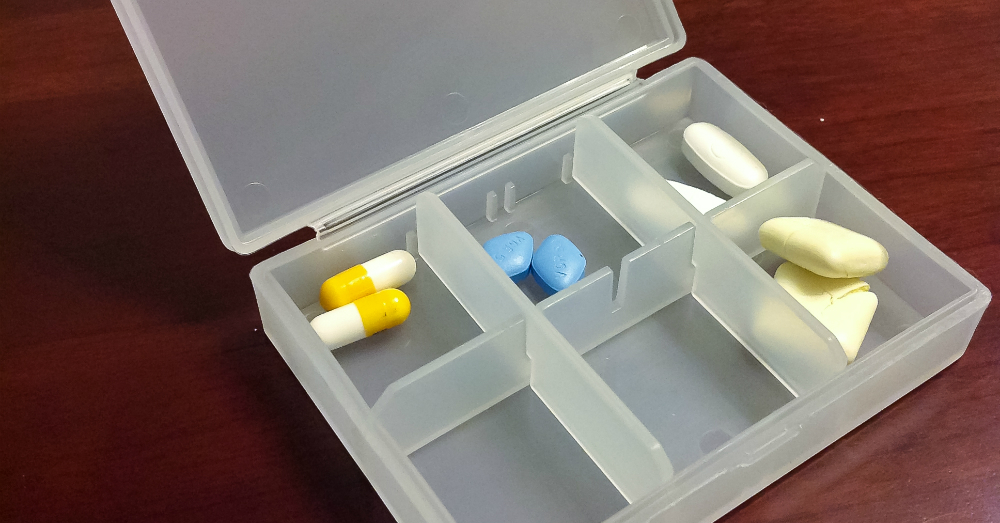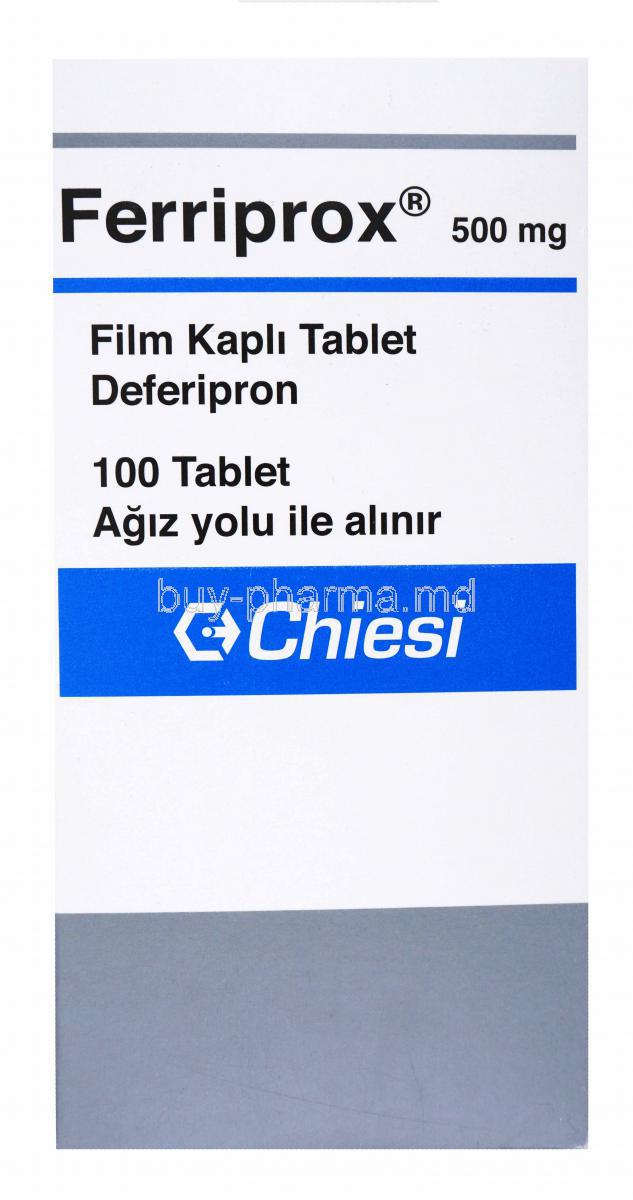Ferriprox
- Introduction
- Uses of Ferriprox
- How Ferriprox Works
- Off-label Use of Ferriprox
- Dosage and Administration
- Composition
- Common Side Effects
- Serious Side Effects and Warnings
- Interactions with Other Drugs
- Contraindications
- Careful Administration and Important Precautions
- Administration to Special Populations
- Overdosage
- Storage Instructions
- Handling Precautions
Introduction
Ferriprox's history can be traced back to advancements in iron chelation therapy. The creation of Ferriprox was an achievement in the field of pharmacology and is closely intertwined with the continuous progress of modern medical science. Today, it holds a respected position in contemporary therapeutics.
Uses of Ferriprox
Ferriprox is a medication that is used to treat chronic iron overload caused by blood transfusion1. It is also used in chelation therapy, which aims to remove metals from the body1. By acting as an iron chelator, Ferriprox binds to and helps eliminate surplus iron, reducing the risk of complications such as heart problems or liver diseases1.
Here are some references that provide more information about Ferriprox:
- Ferriprox (deferiprone): Information for healthcare professionals: A comprehensive resource that provides dosing, indications, interactions, adverse effects, and more.
- Ferriprox medication guide - Food and Drug Administration: A medication guide that summarizes important information about Ferriprox.
- Ferriprox Oral: Uses, Side Effects, Interactions, Pictures … - WebMD: Patient medical information for Ferriprox including its uses, side effects, safety, interactions, pictures, warnings, and user ratings.
- DailyMed - FERRIPROX- deferiprone tablet, film coated: Detailed prescribing information for Ferriprox.
- Ferriprox (deferiprone) dosing, indications, interactions, adverse …: A comprehensive resource that provides dosing, indications, interactions, adverse effects, and more for Ferriprox.
How Ferriprox Works
How Ferriprox works in the body: At a level, Ferriprox has a distinct way of functioning. It strongly binds to iron. It helps eliminate it primarily through the kidneys. The interaction with iron and the chelation process is crucial in reducing the harm caused by excess iron, like organ damage.
Off-label Use of Ferriprox
Some additional uses of Ferriprox that go beyond its primary purposes include treating sickle cell disease and myelodysplastic syndromes1. The off-label application of Ferriprox is supported by various studies and research, including randomized controlled trials, which have shown its effectiveness in conditions that are different from its primary uses1.
Here are some references to support the information provided:
Dosage and Administration
Dosage recommendations: The usual amount of Ferriprox varies but generally falls between 20 to 30 mg/kg taken three times a day. However, dosages should always be personalized based on factors related to the patient. Ways of taking Ferriprox: Primarily, Ferriprox is available in forms like tablets and solutions. In conditions, intravenous administration is also possible, although it is less common. Considerations regarding frequency and timing: While taking Ferriprox three times a day is the norm, the exact timing may depend on factors such as meal times since Ferriprox might be best absorbed when taken on a stomach.

Composition
Deferiprone is the main component that gives Ferriprox its iron-chelating properties and ensures therapeutic results. However, it's important to note that Ferriprox doesn't only contain deferiprone. It also includes essential ingredients to maintain the drug's stability, bioavailability, and palatability.
Common Side Effects
The commonly mentioned side effects; Just like any medication Ferriprox can have some side effects. Some of the ones that are frequently reported include nausea, joint pains, and neutropenia. How long they last and how to manage them; While most side effects are temporary and tend to improve over time it is essential to keep a watch on them. Managing these side effects may involve adjusting the dosage providing relief, or even temporarily stopping the therapy altogether.
Serious Side Effects and Warnings
Severe reactions that may pose a risk to life; Although it is rare, there have been cases where Ferriprox has caused reactions, particularly agranulocytosis. To prevent any complications and ensure the safety of the patient, it is essential to monitor their blood count. Identifying symptoms and necessary actions; If a patient experiences symptoms such, as fatigue, high fever, or throat infections seeking immediate medical advice is crucial. Taking action can help prevent any further complications and safeguard the well-being of the patient.
Interactions with Other Drugs
Some medications may interact with Ferriprox, an effective treatment option. These include antacids that contain aluminum-specific antifungal agents and certain vitamins with iron. It's important to note that taking antacids could affect the absorption of Ferriprox. Additionally, when using agents alongside Ferriprox, there is a potential for increased side effects. To ensure co-administration of medications it is crucial to carefully assess the risks and benefits. Ideally, space out the intake of these medications to avoid any interactions. Regular monitoring for any side effects should also be done as a measure.
Contraindications
There are health conditions that make it inadvisable to use Ferriprox. People with neutropenia or those who have a known hypersensitivity to Ferriprox should avoid using it. Additionally, some medications could potentially reduce the effectiveness of Ferriprox by inducing enzymes. It is also not recommended to use iron chelators without proper medical supervision.
Careful Administration and Important Precautions
Considerations for populations: There are certain groups of people, such as pregnant women or individuals with kidney problems, who require customized approaches when administering Ferriprox. Monitoring blood counts, liver function, and kidney function during prolonged Ferriprox therapy is essential to ensure effectiveness and safety.
Administration to Special Populations
As people get older, their body's response to medications can change. This means that for adults, it's important to be extra careful, make any necessary dosage adjustments, and monitor them closely. Regarding women and nursing mothers, the decision to prescribe Ferriprox should be made after carefully weighing the risks and benefits. While there isn't evidence of any harmful effects on unborn babies, it's best to use this medication only if necessary. For children since their bodies are constantly developing, they often require doses based on their age. It's also crucial to be extra vigilant for any side effects in this group.
Overdosage
Identifying signs of overdose: Accidentally or intentionally taking much Ferriprox can result in gastrointestinal issues, dizziness, or even problems with the cardiovascular system. Taking medical action is crucial for managing an overdose of Ferriprox and may involve treating the symptoms and possibly performing gastric lavage.
Storage Instructions
The recommended temperature and storage conditions for Ferriprox are to keep it at room temperature from direct sunlight and moisture. It is essential to avoid using Ferriprox after it has expired. When disposing of Ferriprox, please follow the guidelines for pharmaceutical waste management and do not throw it directly into household trash.

Handling Precautions
Transportation and handling precautions; To prevent contamination or harm it is crucial to transport Ferriprox following the specified conditions and handle it with cleanliness. Guidelines, for spills or accidental exposure; If a spill occurs it is recommended to sanitize the affected area using suitable disinfectants. In the event of skin contact, thorough washing is necessary, and immediate medical consultation should be sought if any adverse reactions occur.











